

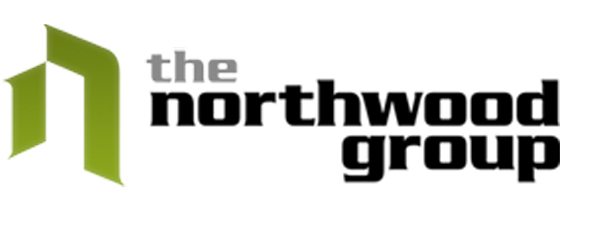
Increasingly, conversations with investors lead to the hot topic of the historically low interest rates, their affect on current values, and the impact that rising interest rates will have both on value and commercial real estate investment activity. It seems that there are as many diverging opinions on this as there are investors and we won’t know who is right until we are looking in the rear view mirror.
I am right along side these investors as I try to map out strategies for myself as well as the investors that I work with. Opinions on these issues affect everyday decisions such as:
Obviously the answers to these questions vary based on the investor and the portfolio objectives but they are interesting to ponder as we consider strategy in the coming years.
It was fascinating to me to watch during peak of the market in 2005-2007 as cap rates went to record levels. Many investors stepped back saying that these prices were too far beyond historical levels. Others said that commercial real estate investment had arrived as an “asset class” and that the historical cap rates no longer had relevancy. We know how that turned out. We are now looking at cap rates that look a lot like what they did prior to the recession. Are we walking in front of that same train? Time will tell but there are some very significant differences between 2005-2007 and today:
I recently read an article written by William E. Hughes and published in Commercial Investment Real Estate Magazine that addressed cap rate and interest rates. I have included the full article as well as a link below. He shares a graph that is very telling. In 2006, the spread between cap rates and the 10 year treasury note was only 200 bps. Although cap rates are similar, there still remains over a 400 bps difference between cap rates and the 10 year treasury note. The argument being that there is room for compression in that spread where interest rates could rise without an immediate correlating increase in cap rates. Additionally, rising interest rates would indicate strengthening in the economy and additional consumer confidence which should also increase confidence in commercial real estate investment strengthening cap rates further.
I thought his article did a great job succinctly addressing a very complex and important topic to our industry.

Strong capital flows, from both equity and debt sources, are boosting the liquidity of the commercial real estate market and driving transaction activity. Equity capital of all stripes — from local investors and 1031 exchanges to institutions that include real estate investment trusts, private equity, and sovereign wealth funds — have accelerated acquisitions and portfolio repositioning to capitalize on the low cost of capital, consistent revenue streams, and rising prospect for appreciation.
At the same time, lenders are back in full force just a few years after the banking crisis. The volume of commercial mortgages, after dropping about 10 percent during the credit crisis, reached a new high at midyear, rising by $140 billion over the past 12 months. Commercial banks have picked up activity in both fixed- and floating-rate loans, commercial mortgage-backed securities volume is strong a second year in a row, insurance companies and government-sponsored agency lenders remain competitive, and mezzanine funds abound.
The wave of liquidity has pushed property prices to record or near-record levels in core markets and is in the process of working its way to secondary and tertiary markets. Property sales are growing in nearly every metro, but investors are increasingly targeting assets in non-core markets as they pursue yields and opportunities with less fervent bidding activity.
The increased liquidity reflects the generally positive outlook for commercial real estate, but the strengthening economy has also supported momentum. Gross domestic product has risen steadily over the last several years — aside from temporary setbacks such as the polar vortex of the first quarter — and the outlook remains positive through the end of 2014.
In addition, steady hiring has finally surpassed the 8.7 million jobs lost during the recession, and by year-end, the U.S. economy should employ 1.7 million more people than the pre-recession peak. Though many remain underemployed or have left the labor force, the hiring trends continue to point in the right direction. This combination of steady growth has allowed the economy to spur demand for commercial real estate while minimizing risks of inflationary pressure.
Job gains have supported limited income growth, but the surging stock market has helped household wealth significantly. As of the end of first quarter 2014, U.S. household wealth was up 19 percent from its 2007 peak and more than 47 percent from the trough in 2009. That has supported rising consumer confidence and substantive gains in retail sales. These steady positive factors will support a growing demand for commercial real estate space on a broad basis.
Several years of low interest rates have helped the real estate market recover from its downturn with a lot less pain than would have been imagined in the wake of the 2008 credit crisis. The rapid recovery in asset values and rebound in lending have reduced the severity of what many thought would be a second thrift liquidation-style event. Increasing economic strength in recent months has lifted the prospects that the Federal Reserve will begin raising its short-term rates early next year, posing limited risk to the real estate momentum.

However, interest rates are unlikely to rise quickly enough to slow the economic momentum because demand for U.S. Treasurys remains robust. International investors in particular have sought out the security of U.S. Treasurys as a range of uncertainties plague parts of the world. While China has cut back its purchases, investors from Japan, Europe, and the Middle East have picked up the slack. Risks of escalating aggression in Ukraine and the Middle East cement the perception of the U.S. as a beacon of stability.
What’s more, the Fed is under little pressure to increase rates. The U.S. economy is improving, but inflation has remained in check and the Fed remains focused on the large number of workers that have dropped out of the workforce or are underemployed. The November elections are another wildcard that could re-ignite gridlock in Washington, D.C., and stall the nascent growth cycle.
Consequently, the Fed is unlikely to raise the federal funds rate until the signs that the economy is heating up really accelerate. Presently, most anticipate that this will not happen before the middle of next year, but there is a chance that the Fed will surprise and begin tightening liquidity sooner.
Once rates do begin to rise, the impact on commercial real estate may be nominal. Historically, capitalization rates have not moved in lockstep with interest rates, with tightening spreads being the norm during most growth cycles. As a result, should rates begin to rise later this year or early in 2015, it remains unlikely that cap rates will escalate in pace.
Although cap rates are near historical lows today, the risk premium — the spread between 10-year Treasury yields and cap rates — persists near historical highs. If Treasury yields rise because of positive factors — such as strong economic growth — investors will have a more optimistic outlook about property performance and be willing to absorb some of the rate increase in the form of lower risk premiums. The bottom line is that, aside from a major exogenous shock, interest rates and monetary policy are not likely to have a watershed impact on the economy or commercial real estate in the near term.
In a real sense, the moderate pace of the economic recovery has been good for commercial real estate performance. Usually new construction comes roaring back after recessions, but incremental growth and the fresh memory of the severe recession has kept development largely in check. Construction is creeping back, particularly for apartments, but it is predominantly centered in core areas of the strongest metros. Supply factors will be slower to emerge and less problematic this cycle than in past recoveries.
Apartments. Apartments have been a favorite asset class for investors since the downturn. Not only did fundamentals remain more stable during the recession, but debt was available from government-sponsored agencies when other lenders tightened their lending criteria. Earlier this year, Fannie Mae and Freddie Mac reined in their lending, and their share of multifamily loans fell to 47 percent in 2014, down from 87 percent in 2009, but it appears they are increasing their allocations through the second half of the year. In addition, banks, insurance companies, institutions, and CMBS programs have stepped up their pace of lending, producing a highly competitive lending environment. Loan rates are mostly in the 4 percent range but can go as low as the mid-3 percent range depending on the term, leverage, and borrower credentials.
With pricing of premium assets in core markets selling with cap rates in the 3 percent to 4 percent range, investors are increasingly moving to secondary and tertiary markets in search of yield. But even those markets are becoming more expensive, as average cap rates for high-quality apartment properties reach below 7 percent.
Office. Investor demand in core markets remains intense. In the first half of 2014, 40 percent of the $50 billion of office sales came from six core markets where class A properties trade at cap rates in the 4 percent range. However, investors pursuing stronger yields and a less-competitive bidding process are increasingly branching into secondary and tertiary markets, where sales increased by 30 percent during the first half of the year. With suburban offices in many metros offering investors a 150-basis point yield premium relative to CBD office assets, investors have begun to search beyond core locations.

Readily accessible debt capital has also fueled activity this year as loan spreads have tightened by 25 bps from last year. Rates range between 4.4 percent and 5.25 percent for 10-year loans with moderate leverage, and leverage up to 70 percent is common. All lender types have become increasingly active, but national banks have increased their share of lending activity to 26 percent. CMBS will also be a positive factor, and it has already increased lending to this sector by $6.1 billion from last year.
Retail. Nationally, vacancy rates of retail properties have been tightening, as modest absorption has topped the limited construction pipeline. In the year ending in the 2Q14, only 37.4 million square feet of space, or 0.5 percent of total space, came on line. This gradual tightening of vacancies has recently sparked rising asking rents, but rents still remain about 11 percent below their pre-recession peak.
Despite the still-soft performance climate for many retail assets, investor demand is strong, particularly for single-tenant properties that are leased to national tenants. The volume and number of transactions between $1 million and $10 million reached a record $10 billion in the 1H14, while price per square foot and cap rates also hit new heights. Multi-tenant sales are also strong, although shy of peak prices. The availability of debt continues to improve, though lenders remain focused on stabilized properties. Local and regional banks are increasing market share, while CMBS is dominant in secondary and tertiary markets.
Industrial. Investors seeking relative stability and diversity to augment existing portfolios have increased demand for industrial assets. In addition, institutional investors have targeted portfolio assets to build a critical mass of assets in a given locality. Cap rates are tightening for all industrial segments, with warehouses making the biggest gains. Warehouse cap rates averaged 7.2 percent nationally in 1H14, and top properties in major markets traded at yields under 6 percent. Flex properties averaged 7.8 percent cap rates nationally in the first half.
Lenders are actively lending on industrial properties, although underwriting remains relatively conservative. National, international, and regional banks increased their share of industrial loans to 62 percent in 2013, up from 48 percent the prior year. Lenders have largely targeted debt yields of 8.5 percent to 9 percent, producing leverage of 70 percent, while offering longer term rates of 4.6 percent to 5.5 percent.
William E. Hughes is senior vice president and managing director of Marcus & Millichap Capital Corp., based in Irvine, Calif. Contact him at william.hughes@marcusmillichap.com.
– See more at: http://www.ccim.com/cire-magazine/articles/323690/2014/11/capital-markets-outlook#sthash.pcEbhkHc.dpuf

The Northwood Group is pleased to announce the sale of the Mountainland Office Building in Layton, Utah.
The building, featuring unique “creative” office space, was acquired by a local advertising agency.
The building is approximately 7,000 square feet including office space and a lease to a local pizza restaurant. More information on the sale is available upon request — 801-593-5500 or brandon@northwoodgrp.com.
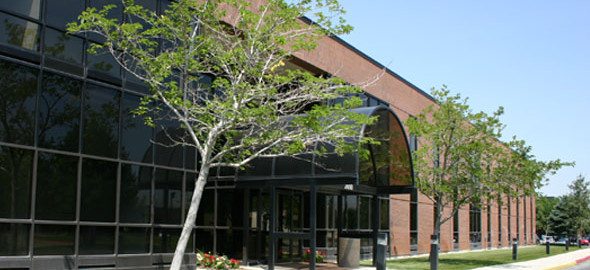
The Northwood Group is pleased to announce that in conjunction with Newmark Grubb Acres it represented the seller in the sale of the Decker Lake Office building located at 2650 South Decker Lake Lane in West Valley City, Utah.
The building is a 73,954 square foot office / call center building. More information on the sale available on request, as well as other salt lake commercial real estate.
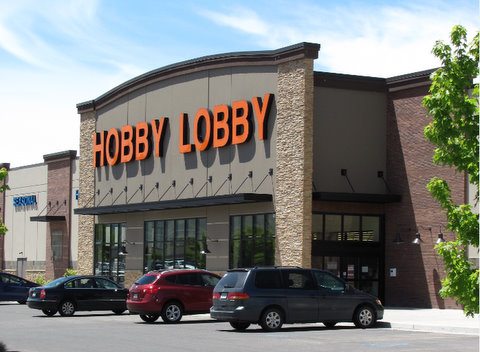
The concept of the single-tenant NNN lease has opened the door for many investors to get into the commercial real estate investment market in a more significant way. Prior to this product type many investors steered clear of commercial real estate investment as a regular part of their investment property portfolio because an overall lack of management expertise, capital requirements, and real estate specific knowledge. Most real estate for the average investor was in the form of REIT’s or maybe a rental home or two. The single-tenant NNN, triple net lease, opened up the market to a method of real estate ownership that was viewed as simplistic and safer than in the past and the market has been flooded with investors seeking this product.
This has been both good and bad for the commercial real estate market as a whole. It has added liquidity to the market which is a good thing. It has arguably also led to the overpricing of these assets.
I recently received an interesting call from a local investor. This investor was a highly educated professional in another industry. His experience in commercial real estate investment was limited to a 1031 exchange that he had spearheaded for his family’s estate several years back which didn’t go very well. They had made offers on several single-tenant NNN deals but seemed to get out-bid on nearly every one of them. It was a very frustrating experience trying to enter this market.
Nevertheless, this investor has now set aside a reasonable amount of cash and is looking to invest himself in an attempt to create some passive cash-flow as he plans for retirement. Upon calling me was already negotiating on a deal and felt like he needed a second opinion. The deal he was considering was a brand new land lease on a to-be-built restaurant building with an average credit tenant. The deal was priced at a 5.25% cap rate and was priced significantly higher than the value of the underlying land. However, the broker has convinced him that the rents were replaceable in the event that the tenant defaulted, which I also believed to be true.
Now I want to be clear that I believe that all investors have different goals and objectives with their commercial real estate investment dollars. There are some categories of investors for which this would be an appropriate deal. I question, however whether it is right for a professional trying to build their nest egg that still has 15 to 20 working years left. That type of deal appears to be too conservative on the return side and really not any safer on the risk side than many other assets. The benefit that was appealing to this investor was the lack of management responsibility whereas he was very busy in his current profession.
Wouldn’t it be more prudent for an investor in this category to consider a multi-tenant building that could be purchased at an 8% to 8.5% cap rate (at a value at or near replacement cost) that already contemplates the expense of hiring management to take care of that property? On a $1 million dollar cash investment the difference in annual cash flow and total cash accumulation over the next 15 to 20 years is substantial. Again, there are different seasons for different investors and I am not making a blanket statement relative to all investors. I’m not sure what decision this particular investor made after our telephone discussion but it made me think a lot about investment strategy for my clients.
Robert Carr of National Real Estate Investor Magazine recently published an article titled “PLATEAU PHASE – Is the single-tenant net lease market flatlining?” The article comments on the decline in single-tenant net lease sales over the last year but attributes that primarily to a lack of supply and also notes that pricing for those sales still occurring is still going up. A few comments from the article that I thought were interesting were:
I believe that the single tenant NNN lease provides a great vehicle for many investors but it is not a “one size fits all” type of investment. A commercial real estate investor really needs to consider his objectives and why he is investing in commercial real estate in the first place and then determine how and where to enter the market. Sometimes popular opinion is good for the masses but not the individual.
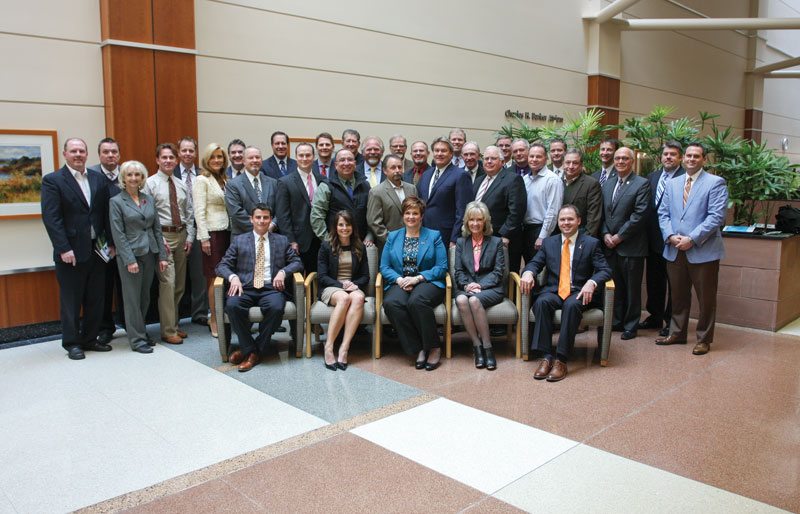
I recently had the opportunity to participate in a roundtable discussion surrounding business in the Northern Utah area put together by Utah Business Magazine. The roundtable was set up to discuss issues such as real estate, education, tourism, economic development, and healthcare.
I thought that the discussion was fascinating and it was interesting to see the number of individuals participating with such an interest in this part of the state. A few of the highlights that came out of the meeting that I thought were interesting and valuable were the following:
The full article can be read by clicking on the following link: http://www.utahbusiness.com/articles/view/northern_utah_regional_report

Along with the formation The Northwood Group we have formed Building Partner Investors (www.buildingpartnerinvestors.com).
The vision of BPI is to give small businesses the expertise and financial ability to increase cash flow and control for their businesses now and build long-term wealth for the future.
It does this by partnering with companies to acquire the buildings in which they operate their business by providing equity and access to financing and expertise in commercial real estate. Most typically BPI will put up half of the required equity to help a businesses buy their building.
The principals of BPI come from the commercial real estate brokerage industry where some interesting patterns emerged. Many successful business owners worked their entire lives generating a good income during their working years but failed to position themselves to have sufficient assets at retirement. One of the primary miscues was failing to acquire the real estate they use in their businesses from real estate agents for investors.
Building Partner Investors is the solution for businesses that want greater control of their facilities not only for their businesses but for the growth of their personal financial portfolio. Here’s how.
We understand how important working capital is and the concerns of tying up large amounts of cash. We use our cash to provide equity investment alongside business owners for building acquisitions.
What better partner to have than one with the knowledge to help you succeed?
Our relationships and great track record with lenders lead to better loan terms. We can even provide credit enhancement in certain cases where financing is challenging.
For those companies needing to sell their buildings but still want to occupy and maintain control we can provide liquidity through a sale/leaseback buying all or a share of your building .

I am pleased to officially announce the creation of The Northwood Group (www.northwoodgrp.com) — a commercial real estate company that helps investors and business owners identify commercial real estate opportunities then structure purchases that help our clients reach their financial goals.
The Northwood Group provides unique commercial real estate services for following groups:
We work with investors looking for commercial real estate investment opportunities that want more than what is always seen on the open market through traditional channels.
Helping business owners use real estate as part of their growth strategy and wealth building tools is what we thrive on.
We consult with cities, counties, economic development groups, school districts and other government and non-profit groups with their commercial real estate needs.
If you own commercial real estate you need or want to sell, we have investors that are looking for opportunities. We want to see your property.
Our client’s interests always come first. Our clients can testify that we provide very candid and realistic recommendations based on facts and experience. We are very selective about opportunities and suggest that clients pass on deals more than we recommend moving forward.
Please learn more information at www.northwoodgrp.com.

Commercial real estate investment, why do you invest? It is an interesting question with a multitude of answers none of which are right or wrong in and of themselves. However it is an important question for us to understand individually if we are the prosper in our ventures.
The traditional interaction between the commercial real estate investor and the broker typically involves dialogue surrounding topics such as:
These are all very important questions as the investor is interviewing the broker for competency and the broker is seeking understanding of the investors criteria. These are conversations that I have had on many occasions.
However I noticed an interesting trend over the last 15 years as I have developed long-term relationships with different investors and completed several commercial real estate investment transactions with each. Most fully understand the fact that they want to invest in commercial real estate. They know what they like and why they like it but often they have not gone to the next level of understanding “why” they are investing.
Why are we investing in commercial real estate? What is the ultimate outcome? Does it have meaning in our lives outside of the intrinsic financial benefits it provides? How do we know when we have enough? Are we saving for retirement? What are we going to do during retirement? Why are we willing to take this risk but not that risk? What will this investment do for me in my life now and what will it mean to me in the future?
Over the years I have seen investors get in the game too early before they are sufficiently capitalized and I have also seen investors stay in too long, under estimating the completion time of the next project and being stuck working through a challenging commercial real estate investment property when they would prefer to be off doing different things. As I have thought about this and talked with investors about it the most common responses generally fall into the following categories:
Although most do not come out and say it I think that many of us also fall into the pattern of just wanting to accumulate more. There is nothing good or bad in any of these motives but I think that we can be smarter as investors and it can have more meaning and effectiveness if we really understand “why” we’re making investments and have that path clear before us.
For me, commercial real estate investment has the ability to produce cash flow more consistently than any other investment that I understand. That cash flow has the ability to give me the freedom to be more discerning about the types of deal and the types of clients I choose to work with. I also get a lot of joy from working with tenants and helping them to succeed in their businesses along the way.
I guess the point of these thoughts is that there is likely no right or wrong answer to the “why” of investing in commercial real estate. That is not nearly as important as fully understanding what it means to us individually and to our own portfolio’s. Understanding our own personal motives helps us to be better and more discerning investors and increases our opportunities for success.
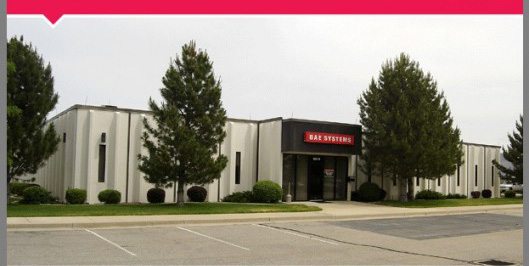
BAE-Single Tenant Investment | 1890 W 4000 S Roy, Utah
FOR SALE: $1,750,000

2013 was one of the best commercial real estate investment markets in Utah since the downturn following 2007. In fact, investment dollar volume nearly reached 2006 and 2007 levels. The Utah commercial real estate investment market has always been viewed as a “secondary” market. Like other secondary markets, investment volumes slow significantly during recessions as money (especially institutional money) tends to flow to the major markets. However, unlike other secondary markets, Utah boasts incredible stability, low unemployment, and an extremely pro-business government that is very competitive at attracting new employers. For those reasons it has become a darling among all types of commercial real estate investors. In addition to the out-of-state investors, there always remains a very entrepreneurial local investment crowd that creates more liquidity than other secondary markets.
In March of 2014, Beth Mattson-Teig of Commercial Real Estate Investment Magazine wrote an article on the current trend towards secondary markets titled “Surf’s Up — Investors Catch the Wave in Secondary Markets”. You can find the link to the article here or the full text is below. I believe that this trend is interesting and valuable to understand as it relates to the Utah Commercial Real Estate Investment Market.

Secondary markets are riding a wave of recovery that has brought a welcome resurgence of investment sales activity. The expansion into secondary markets is the theme du jour in the commercial real estate market. “We have seen a massive movement of capital from primary locations to secondary locations, both on the equity and debt side,” says Dan Fasulo, a managing director at Real Capital Analytics in New York. “That has created not only an explosion of investment activity, but a corresponding rise in values in these secondary markets,” he adds. Growing confidence in the economic and commercial real estate market recovery has been a boon to investment sales in the past 18 months. Fueled by interest rates that remain near historic lows, investment sales surpassed $355 billion in 2013 — up 19 percent over the $299 billion in sales that occurred in 2012, according to Real Capital Analytics. After a considerable dry spell, secondary and even tertiary markets across the country are experiencing a spike in investment sales.

That momentum is expected to continue in 2014 as investors both increase and broaden their interest in secondary markets as they search for higher yields. Certainly, secondary markets in Texas, such as Houston and Dallas, as well as West Coast markets including the likes of Portland, Ore., and Seattle have been on the short list for the past year. But investors also are stepping up buying across the country in markets ranging from Las Vegas to Nashville, Tenn.
“In general, there is so much more confidence among investors that they are willing to take more risk than they were in the past, and they are more willing to step up and buy properties that they were not willing to a year or two ago,” says Dave Winder, CCIM, director of office and investment properties at Boise, Idaho-based Cushman & Wakefield/Commerce.
For many markets, that confidence stems from marked improvement in the local economies. In Boise, for example, the unemployment rate has dropped from a high of around 10 percent to now below 6 percent. “It hasn’t been stellar job growth, but there is good job growth occurring,” Winder says. A significant amount of employment in Boise is driven by the residential market. Mortgage financing and residential construction stopped in 2007 and 2008 and now that industry is coming back, which is helping to drive the broader economy, he adds.
Commercial investment real estate sales have been on the upswing since 2010. The increase in investment sales nationally is creating a trickle-down effect across markets. Greenville, S.C., for example, saw an uptick in activity in the past year among both buyers and sellers as more properties landed on the for-sale market.
“The activity that we are seeing now across the board in office, industrial, and even retail has been terrific,” says Brian Young, CCIM, SIOR, a senior vice president and managing broker at Cushman & Wakefield/Thalhimer in Greenville. In 2013, about $250 million in sales had either closed or were under contract for sale at year-end.
That is an impressive amount for a market the size of Greenville, which is home to about 840,000 people in the surrounding metro area. Although the number of transactions has increased, the total volume also was bolstered by a single large transaction. Cushman & Wakefield/Thalhimer listed the 2 million-square-foot Adidas campus last fall. Young expects that property, which will continue to be leased long-term by Adidas, to sell for about $125 million.
Although large institutional investors and real estate investment trusts are generally the ones that grab attention for their transactions, the lifeblood for many secondary and tertiary markets remains the smaller local and regional investors. Traditionally, Boise is an investment market that has been dominated by local and regional buyers and now that the sales market is rebounding, those same players are back and actively looking for new opportunities. “In the last year, transaction activity has increased exponentially in my market,” Winder says.
For example, Cushman & Wakefield recently brokered the sale of a 25,584-sf medical office building in downtown Boise. The building is 100 percent occupied by strong tenants, most of which have long terms remaining on their leases. It was purchased by a local investor with an out-of-town partner. The property sold for a lower-than-typical capitalization rate of 6.5 percent due to its strong tenants and stable, long-term cash flows.
Canadian buyers also have stepped up their buying activity in Midwest markets such as Minneapolis and Columbus, Ohio. They see opportunities to buy properties as real estate markets improve. And they also are using those investments as a hedge against the U.S. dollar, notes Shad Phipps, CCIM, a senior associate in the investment properties/private capital group at CBRE Capital Markets in Columbus.
In Columbus, Canadians are acquiring quality, multitenant office buildings in good locations that are still priced well below replacement value. For example, Montreal-based Amcor Holdings has acquired seven office buildings totaling about 950,000 sf from AEW Capital for $25.1 million. “I think there is opportunity here, and I think that is ultimately what they are looking for,” Phipps says.
The lure of higher returns has served as a magnet to draw capital to the secondary markets. Investors are clearly driven by the need to boost yield. Buying property in Manhattan or San Francisco at a 4 percent yield per year is just not going to cut it, Fasulo says. “So, all of a sudden places like Minneapolis and Pittsburgh and Phoenix that were considered a little risky have now come back on the radar,” he adds.
After moving to a near 10-year high, the price spread between properties in primary and secondary markets has started to narrow again. Pricing among the six major metros rose 9 percent through October 2013, while prices in non-major metros were up 13 percent, according to Real Capital Analytics.

Competition and bidding wars for core properties in gateway cities such as New York, San Francisco, and Washington, D.C., have prompted buyers to expand their list of target markets. “As these investors continue to look for a certain yield, they have been forced to look in secondary and tertiary markets like Greenville,” Young says. For example, Cushman & Wakefield/Thalhimer had the listing on a 221,000-sf industrial building in south suburban Greenville. The property drew about 10 offers and had five serious bidders that made it to the third round. Exeter Property Group, a Pennsylvania-based private equity firm, ended up buying the building in November for $9.7 million or a cap rate of 7.5 percent.
“You’re seeing more and more investors seeking a better yield and coming to markets like Lexington, Ky.,” agrees Bruce R. Isaac, CCIM, SIOR, senior vice president at NAI Isaac Commercial Properties in Lexington. Buyers are looking for well-located, highly occupied properties that are leased to good credit tenants. In Lexington, for example, apartments as well as single-tenant net-leased and grocery-anchored retail centers are in demand.
Typically, investors can find investments that generate returns higher than in primary markets. For example, Lexington currently has a triple-net-leased Walgreens property listed that will likely sell at a 5.5 percent to 6.5 percent cap rate. Even though that is an aggressive cap rate for Lexington, it is still well above the 4 or 4.5 percent cap rate that similar “A” credit net-leased deals could draw in larger cities.
Although buyers are making decisions based on their own unique investment criteria, there are two distinct strategies that have emerged. One group of investors is searching for stability and cash flow, while at the opposite side of the spectrum are those buyers pursuing the higher yields of value-add opportunities.
Both strategies are in play in the Columbus market. For example, CBRE recently represented the lender on the sale of a real estate-owned retail property that was 42 percent occupied in suburban Columbus. The 26,150-sf retail strip center ultimately sold to a local private investor for well below replacement cost at $850,000 or $32.50 per square foot. The new owner has since invested in the property, improved occupancy, and now has a property with positive cash flow. “These are the types of projects that, when bought at the right price and managed correctly, will produce quite a return for the owner,” Phipps says.

Buyers are more hesitant when it comes to acquiring properties that fall somewhere in between those two categories, Phipps notes. Those stabilized properties that are priced at market are generating less interest, because there is still some leasing risk. So, it lacks the security of a triple-net-leased property and also the upside of a more value-add buy.
There is a risk that rising interest rates could create price uncertainty, which could slow investment sales. However, some industry experts believe that concerns of higher interest rates are offset by improving market fundamentals in terms of rising occupancies and rents. “I see a wave of capital built up that feels every bit as deep as 2007,” Fasulo says. “I think you will see a continued expansion of recovery to different geographies around the country and into almost every property sector, irrespective of interest rates that may be moving higher. There is just too much capital right now.”
Beth Mattson-Teig is a business writer based in Minneapolis.
– See more at: http://www.ccim.com/cire-magazine/articles/323456/2014/03/surfs#sthash.2yRo4pqH.dpuf